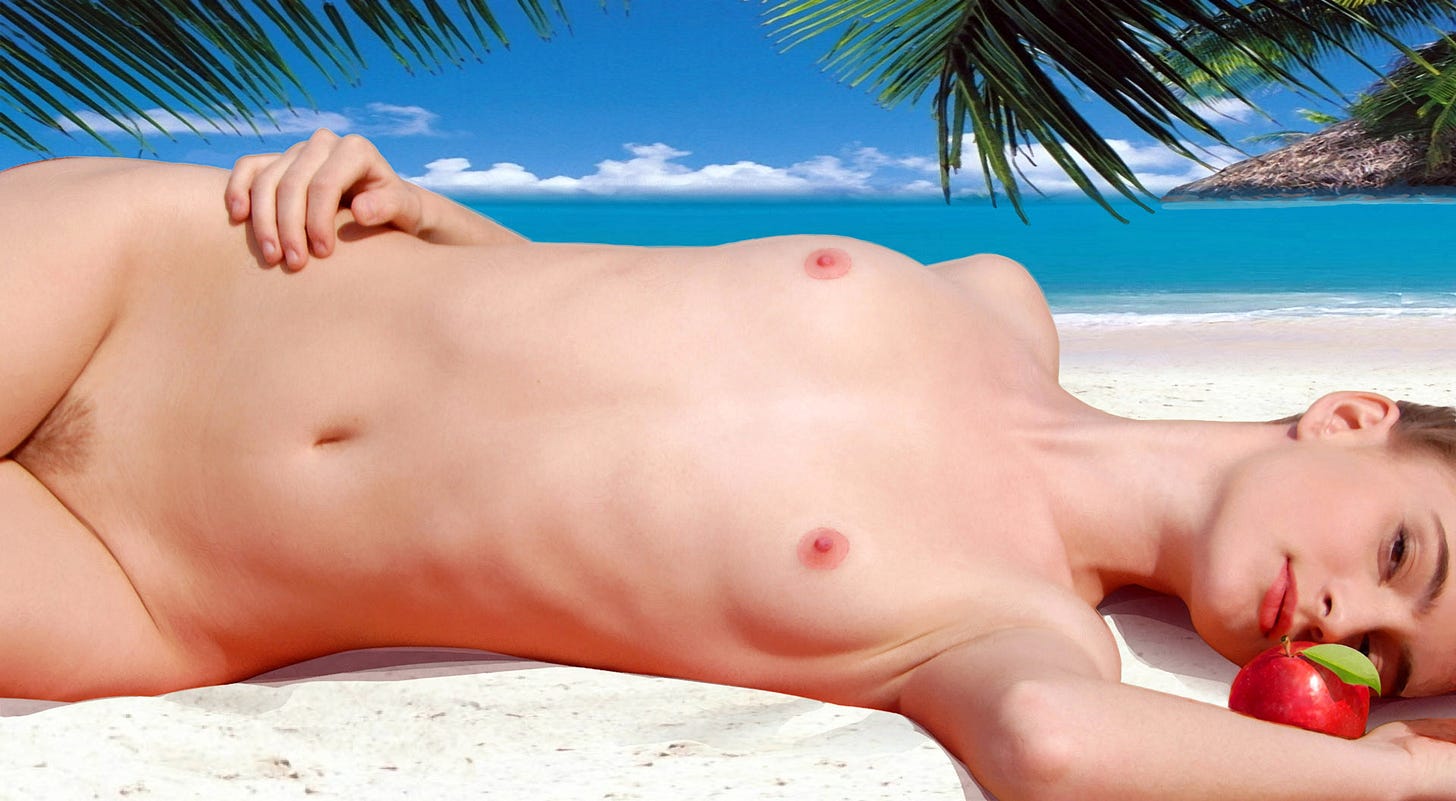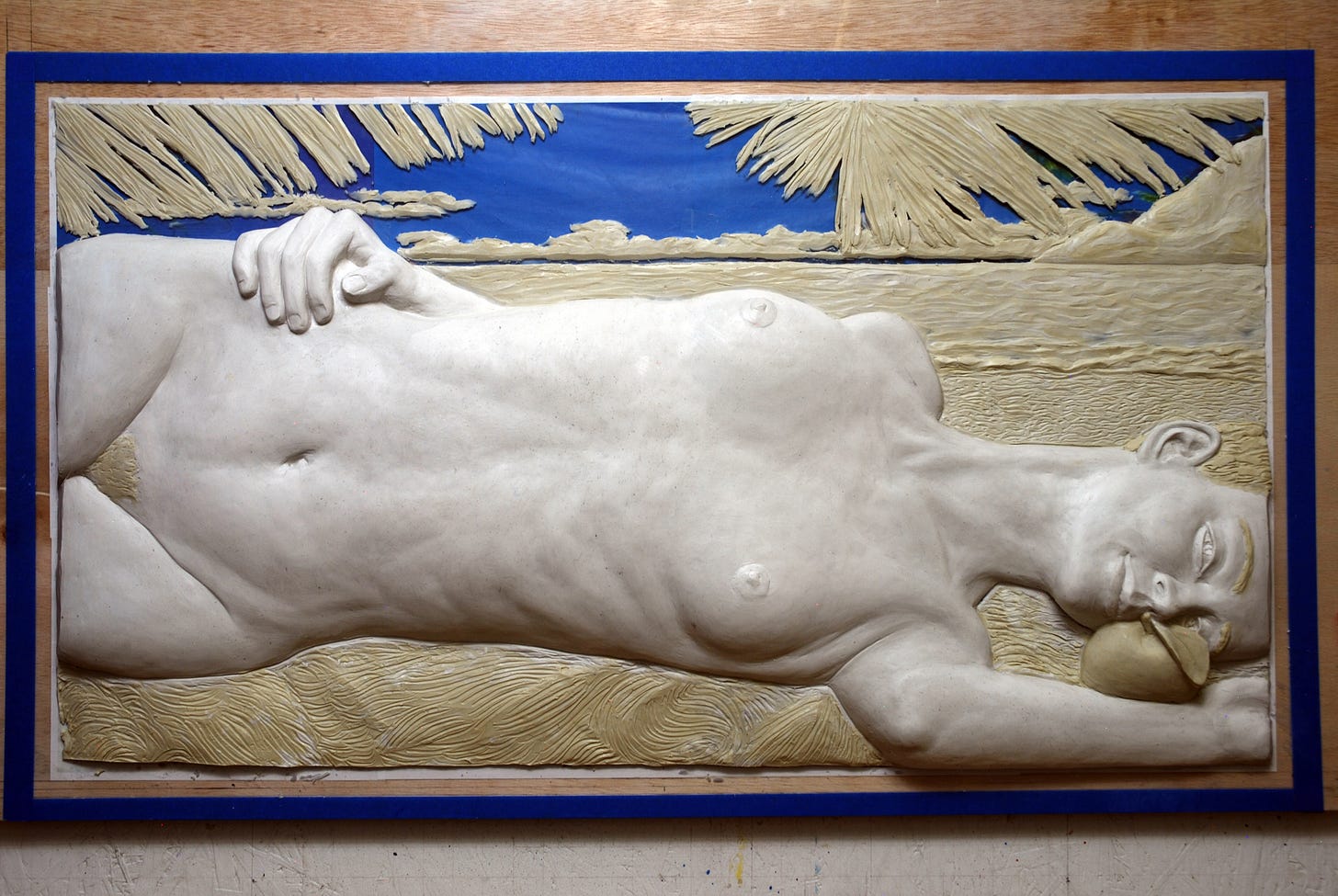Apple on a Beach, Study No. 3
A ripe apple, a sunlit beach, and the naked human form—the idea of innocence.
I’ve sculpted as long as I’ve painted and now I’m learning how to join them.
Several years ago, I began attaching plaster to canvas but no matter how strong the plaster, even the slightest tap can nick the work and leave white specks. Last year, I came up with the idea of using handmade paper pressed into a mold, then fixing this large sheet of heavy-weight paper onto a canvas stretch over a wood panel frame. My first attempt was part of my “Kimono” series, “Future Past”—32 in x 43 in sheet of paper.
It was a moderate success. With the “Apple on a Beach” series, I’m going from a maximum of a 1 inch relief to a 2 inch maximum, giving the work a more pronounced modeling.
I have placed sketches on this series here, Apple on a Beach. If you would like to commission one of the sketches then you could request the size you would like (inches or centimeters). The larger the piece, the more time it takes to sculpt, and dry the mold and the paper.
Notes on the series:
Foreshortening
One of my most difficult aspects to this new direction (sculpting a two-dimensional work) is to keep the relief under two inches and still have a good representation of the subject from whatever angle. Foreshortening is the greatest challenge. Only at extreme angles will you notice deformity in form.
What I find truly pleasurable, the collector can to alter the art by shifting the light source; thus, the shadows cast by the light will radically change the look and feel of the artwork. The connoisseur as participant—very cool.
Video of the sculpting process





